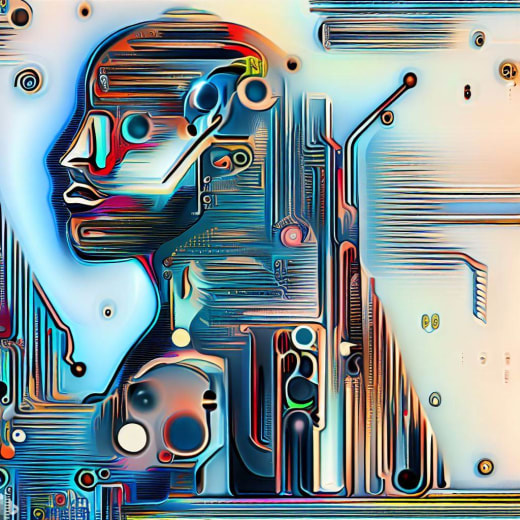The Impact of Generative AI on Communications and Creative Industries
Abstract: Generative AI has emerged as a transformative force, revolutionizing various aspects of communications and creative industries. In this article, we delve into the intricacies of generative AI techniques and their applications within these domains. We explore advanced models and algorithms, such as Transformer architectures, GANs, and deep reinforcement learning that have reshaped content creation, collaboration, audience engagement, and automation. Additionally, we discuss the ethical considerations surrounding the responsible use of generative AI in communications and creative contexts.
Generative AI techniques have significantly transformed content creation within communications and creative industries. Transformer architectures, including the seminal Transformer model introduced by Vaswani et al. (2017), have revolutionized natural language processing tasks. These architectures employ self-attention mechanisms to capture long-range dependencies in text, enabling the generation of coherent and contextually rich content. Furthermore, Generative Adversarial Networks (GANs), as proposed by Goodfellow et al. (2014), have revolutionized image generation and manipulation. GANs consist of a generator network that synthesizes content and a discriminator network that distinguishes between generated and real content. By leveraging GANs, professionals can create visually compelling images, videos, and graphics that push the boundaries of creativity.
Collaboration and Co-Creation
Generative AI facilitates seamless collaboration and co-creation between humans and machines within communications and creative industries. Pre-trained language models, such as OpenAI's GPT series, based on Transformer architectures, have demonstrated remarkable language generation capabilities. These models provide valuable writing assistance, generating real-time suggestions and improving draft quality. Fine-tuning these models on domain-specific data empowers professionals to collaborate effectively with AI tools, refining content, and generating engaging narratives that resonate with their audiences.
Audience Engagement and Personalization
Generative AI plays a pivotal role in enhancing audience engagement and personalization within communications and creative industries. Deep Learning-based recommendation systems employ generative AI techniques to deliver tailored content to individual users. Collaborative filtering, content-based filtering, and hybrid approaches leverage advanced algorithms such as matrix factorization, neural networks, and variational autoencoders to analyze vast amounts of data and generate personalized content recommendations. By dynamically adapting content delivery strategies based on user feedback and engagement patterns, professionals can optimize audience engagement and create compelling experiences tailored to individual preferences.
Automation and Efficiency
Generative AI's automation capabilities drive efficiency and optimize workflows within communications and creative industries. In computer vision, Convolutional Neural Networks (CNNs) have revolutionized image processing tasks such as object recognition, semantic segmentation, and image synthesis. These models, equipped with deep architectures like ResNet and Inception, enable automated content tagging, image organization, and metadata extraction, streamlining content management processes. In Natural Language Processing, automated techniques such as text summarization, sentiment analysis, and language generation enable professionals to automate textual content-related tasks, including summarizing lengthy texts, analyzing sentiment in user feedback, and generating coherent and contextually relevant text. By leveraging generative AI's automation capabilities, professionals can optimize their workflows, reduce manual effort, and allocate more time and resources to creative endeavors.
Ethical Considerations and Responsible Use
As generative AI continues to advance, ethical considerations and responsible use are paramount within communications and creative industries. Addressing biases in training data, ensuring privacy preservation, and respecting intellectual property rights are crucial ethical concerns. Researchers are actively developing techniques such as dataset debiasing, federated learning, and differential privacy to mitigate biases, protect user data, and ensure transparency in the creation and deployment of AI-generated content. Professionals must adhere to ethical guidelines, provide transparency in the decision-making process of generative AI systems, and ensure responsible and ethical use throughout their work.
Conclusion
Generative AI has revolutionized communications and creative industries, offering new possibilities for content creation, collaboration, audience engagement, and automation. By leveraging advanced models, algorithms, and techniques, professionals can push creative boundaries, optimize workflows, and deliver compelling experiences tailored to individual preferences. However, responsible and ethical use of generative AI is crucial, necessitating ongoing research, the development of guidelines, and the adoption of transparency and accountability measures to ensure a future where generative AI empowers professionals while preserving ethical standards.




